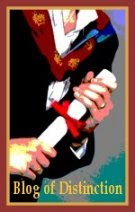
High: 71° F
Low: 42° F
Conditions: Calm and clear
Maybe the squirrel was trying to steal our butter.
.
That doesn’t make a lot of sense at first glance, I know, but follow me through the logic and see if we can change your mind.
Around 9:00 this morning, the three quadrupeds in our house sprang into action. That’s not all that uncommon, mind you: on any given day, we regularly cycle through phases of cat-chasing-cat, other cat-chasing-other-cat, dog-chasing-both-cats, and myriad permutations of these basic configurations. We also break for phoebe (Sayornis phoebe) and mourning dove (Zenaida macroura) sightings, the occasional feral cat (Felis catus) crossing our driveway, and (of course) grazing white-tailed deer (Odocoileus virginianus)in our backyard.
What was unusual about this morning was the choreographed synchronicity of the three quadrupeds. Choreographed anything is a rare event indeed in our house (see above account of animal-chasing-animal for possibly reasons why this is atypical behavior). Even still, Ari and the two cats moved with the precision of a Russian military parade. They poured down the stairs in order of size then leapt upon the couch at nanosecond intervals. Does it matter that one among their rank is not allowed on this piece of furniture? Absolutely not. At least, not in time of crisis. And crisis is indeed what we had on our hands. The three stood at attention, pawing angrily at the window. When that yielded no result, they growled. In unison. Believe you me, this was no amateur show of force.
And what was the cause of their assertive effort? A lone red squirrel (Tamiasciurus hudsonicus), weighing in at approximately ½ a pound (tail included). Admittedly, these bold little rodents are known for being brazen and ill-tempered. But capable of hostile take over? I’m skeptical.
The quadrupeds weren’t. They seethed at the window as the squirrel blithely groomed itself on the hood of our gas grill, then picked its way along the exterior wall of our house, then eventually scurried up and over the roof.
When I left for a morning meeting, Ari and the cats were still vigilent, no doubt prepared for full rodent infiltration.
When I returned, I found this:

A simple empty plate, you say. Yes; that's right. But here’s the rub: this plate was neither empty nor chipped when I left home. Nor was it in the corner of the living room, tucked carefully behind an end table. No, when I departed the plate held at least a 1/3 of a stick of butter. It was also covered. And set on a sugar canister pushed far back in the nethermost region of our kitchen counter. Said kitchen counter measures approximately four feet high. I am inclined to believe teamwork was involved in this relocation project.
But why?
I studied philosophy in college, and I was particularly fond of formal logic. I understand syllogistic reasoning. I know, for instance, that you cannot prove a major premise through its minor corollary. I know that any conclusion must be both logical and sound. It is unlikely, then, that:
M. Rogue squirrel appears on grill and house
m. Butter dish found hidden in living room
_________________
.'. Rodent plot to filch butter averted
The unlikelihood of this conclusion is, of course, based on human logic. Caninaturalist logic is another beast entirely—and one, I might add, without a Linnaean or taxonomic identification to help me categorize it.
I asked the animals, but the three accomplices aren’t talking. Neither is the squirrel.


 And its commitment to preserving the history of its fishing past (note sailor cat in the image below).
And its commitment to preserving the history of its fishing past (note sailor cat in the image below).







 Colorful signs of spring seem to be arriving all around our house these days. Nevertheless, I haven’t been able to get over the feeling that something is missing.
Colorful signs of spring seem to be arriving all around our house these days. Nevertheless, I haven’t been able to get over the feeling that something is missing.








 Had the artist lived here during early summer, he would not have been able to devote the meticulous time and care needed to complete this homage. In fact, I dare say that the mere thought of spending this much time contemplating
Had the artist lived here during early summer, he would not have been able to devote the meticulous time and care needed to complete this homage. In fact, I dare say that the mere thought of spending this much time contemplating 

























